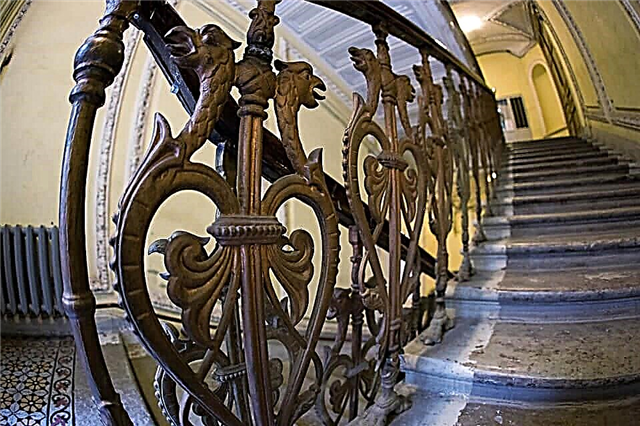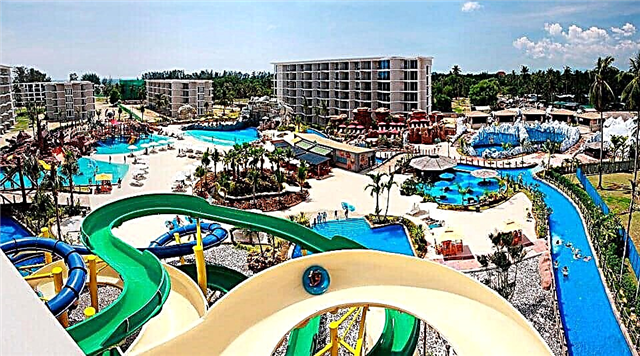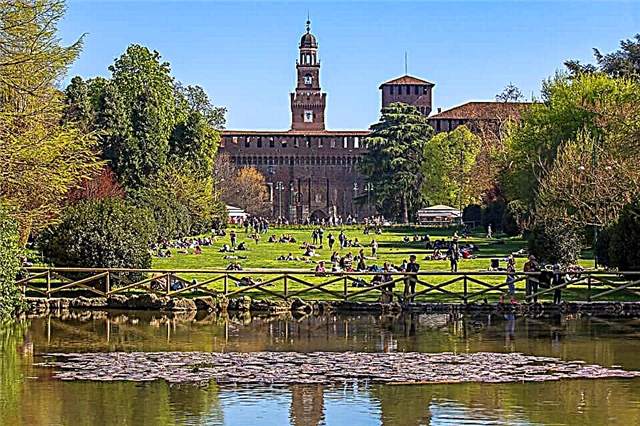Address: Russia, Nizhny Novgorod Region, Nizhny Novgorod, Krutoy Lane, 3
Completion of construction: 1683 year
Shrines: particles of the relics of the Great Martyr Barbara, Saint Philaret, Metropolitan of Moscow, Saint Innocent of Moscow, a copy of the miraculous icon of the Mother of God "Inexhaustible Chalice", icons "Lord Almighty", "Saint George the Victorious"
Coordinates: 56 ° 19'35.2 "N 43 ° 59'25.0" E
Content:
The Nizhny Novgorod Assumption Church cannot be confused with any other church. Its architecture traces very ancient traditions that came from the wooden architecture of the Russian North. And although this church was built of stone, at its completion the canons of a wooden "crumbling barrel" - a picturesque covering with keeled pediments on all four facades, were observed. Many pilgrims and tourists come to see one of the most amazing and beautiful temples in the city.

View of the south facade of the church
History of the Assumption Church
According to an old legend, on the site of the stone church there used to be a wooden monastery with a tent-roofed church of the Assumption of the Blessed Virgin Mary. In written sources, this Orthodox monastery was first mentioned in 1606, and information about it was recorded in the letter of the Russian Tsar Vasily IV Shuisky. However, after only 15 years, in the Hundredth Charter, the Dormition Church is spoken of as a parish one. This means that the monastery had already been abolished by that time.
It is curious that next to the old monastery there was a manor that belonged to the parents of the famous Russian inventor Ivan Kulibin. And now a memorial sign has been installed at this place.
The stone temple appeared in the elevated part of Nizhny Novgorod, in 1672. It was built with money allocated by a local merchant Afanasy Firsovich Olisov. Like many churches, the Assumption was erected "by vow." The merchant, appointed head of the Nizhny Novgorod customs, before leaving for Astrakhan in 1666, promised to build a temple on Ilyinsky Mountain and, to his honor, he kept this promise. The new church was covered with a silvery aspen ploughshare, and forged gilded crosses were installed on the domes.
The Olisovs' pedigree deserves a separate story. They have lived in the city from generation to generation. Afanasy's great-grandfather - Davyd Olisov and his brother Stepan in the 20s of the 17th century were considered quite well-to-do people in Nizhny Novgorod. The brothers were engaged in soap making, little by little they traded and enjoyed great authority among the townspeople. Davyd's heir Firs, and then his children Afanasy, Anisim and Ivan, born in the 1630s, continued the family business.

View of the church from the side of Urozhainy Lane
It is known from the temple chronicle that in 1715 a great fire occurred in the Church of the Assumption, after which it was restored for a long time. At the end of the 18th century, the original barrel roofing deteriorated and was replaced by a more practical eight-pitched roof. The next reconstruction took place 50 years later - in 1834, when the builders rebuilt the refectory and the bell tower.
However, this bell tower only stood for three decades. In 1852, Afanasy Yermilovich Turmyshev, who at that time was a provincial architect, took up the construction of a new building of the bell tower - in the pseudo-Byzantine traditions. Numerous business trips around the province undermined Turmyshev's poor health. Inspecting various construction sites and moving from village to village, he constantly caught a cold and in April 1856 died of an illness. In the same year, the construction of the Assumption Bell Tower was completed. Another restructuring of the temple on Ilinskaya Gora took place in 1899, when the altar room was significantly expanded.
During the years of Soviet power, the unusual temple was closed. This share fell to the majority of churches in Nizhny Novgorod, and only three of them remained active. In 1934, when the anti-religious campaign reached its peak, with the permission of the city authorities, the buildings of the refectory and the bell tower were simply demolished, and only the foundation was left from the church itself.

General view of the Assumption Church
In the 60s of the last century, as if coming to their senses, the city authorities began to restore the desecrated temple. The Nizhny Novgorod architect Svyatoslav Leonidovich Agafonov prepared a restoration project that provided for the restoration of the church, the refectory, and the bell tower. However, at that time only the main volume of the temple was restored.
In 2003, it was consecrated, and regular services began to be held here. And a year later, when the restoration of the Assumption Church was carried out, a refectory, a bell tower was erected and the temple grounds were completely equipped, laying out the paths with neat paving stones. At this time, a team of icon painters, led by Alexei Vladimirovich Antsiferov, performed extensive work on painting interiors, restoring the altar and creating new images for the iconostasis.
The Assumption Church became the first Nizhny Novgorod temple restored in the historical part of the city - "Ilyinskaya Sloboda". A little later, a second life was given to the ancient churches of Elijah the Prophet and the Myrrh-Bearing Women. Large-scale restoration work was made possible thanks to large private donations. And today a list of those who contributed money for the restoration of the temple is placed near its entrance.

View of the main entrance to the church and the bell tower
The architecture of the temple and its interior decoration
Like many churches in Nizhny Novgorod, built at the turn of the 17th and 18th centuries, the five-domed Assumption Church is compositionally stretched in one line - a "ship". This church consists of the temple itself, a one-story refectory and a hipped bell tower. The prayer hall, covered with a closed vault, stretches from north to south and has dimensions of 7.1 by 9.5 m.
The coverage of the main volume of this church is unique. It is made in the form of a so-called "crumbling barrel" or "four-face barrel". The expressive keeled pediments of the Nizhny Novgorod temple are turned in all four directions. This technique was used by Russian craftsmen only in the construction of wooden churches. And in Russian stone architecture, with the exception of the Assumption Church, it was never used. On the roof, graceful bulbous domes are installed on five elongated deaf drums.
Outside, the keeled pediments of the temple are decorated with four picturesque panels made by the Nizhny Novgorod workshop "Kovcheg" in 2011. These mosaic icons depict the Savior Not Made by Hands, Sergius of Radonezh, Archangel Michael and Saint Prince George Vsevolodovich, the revered founder of Nizhny Novgorod. In addition, the temple has preserved unique Balakhna tiles made in the 17th century.

Church domes
Across the street from the church are stone white chambers that once belonged to the ktitor of the Dormition Church, merchant Afanasy Olisov. But this two-story building was erected two years earlier than the temple - in 1670.
The current state of the temple and the visiting regime
The Orthodox Church is active. It belongs to the central Bishop's courtyard and is a state-protected cultural heritage site. Anyone can get inside the church. However, care must be taken to ensure that clothing is consistent with the traditions of visiting Orthodox churches. Divine services are held here every day: on weekdays - at 8.00 and 16.00, on Sunday and holidays - at 8.30 and 16.00. The patronal feast is celebrated in the Church of the Assumption on 28 August.
Particles of relics of Christian saints are considered especially revered temple shrines, as well as a copy of the miraculous image of the Mother of God "Inexhaustible Thicket", donated to the Nizhny Novgorod temple by the Orthodox male Vysotsky monastery, which is located in the city of Serpukhov near Moscow. In addition, many believers come to pray to the icons depicting the Lord Almighty and St. George the Victorious.
If you come to the church with a child, you can relax and play on the playground equipped right in front of the church. It is also convenient that those who come to the church by car can leave their car in the equipped parking lot.

View of the temple from the refectory
How to get there
The temple is located not far from the Nizhny Novgorod Kremlin, in house 3 on Krutoy Lane. This area of the city has long been called Zapochayane, since it is located above the Pochayna River, which was removed into a sewer back in the 19th century. From the metro station "Gorkovskaya" to the Assumption Church in 15 minutes can be reached by trams, buses or minibuses (stops "Ulitsa Dobrolyubova" and "Rechnoy Vokzal").











